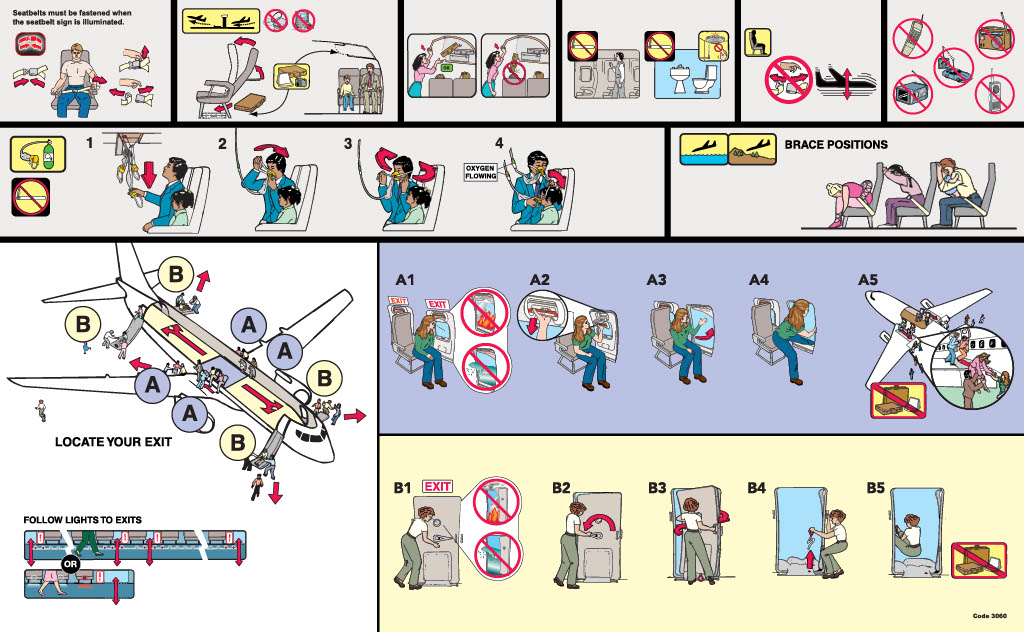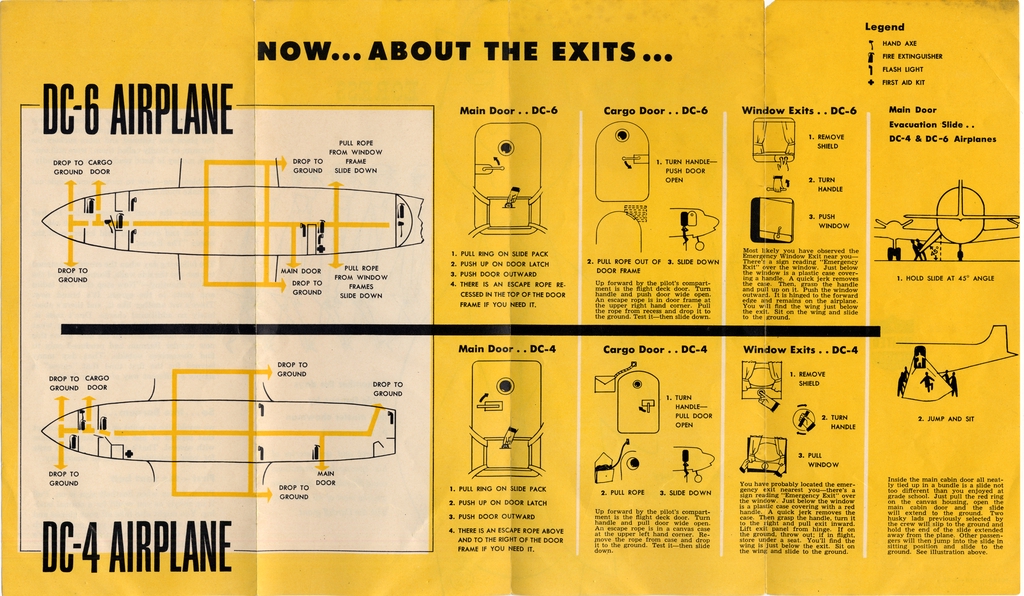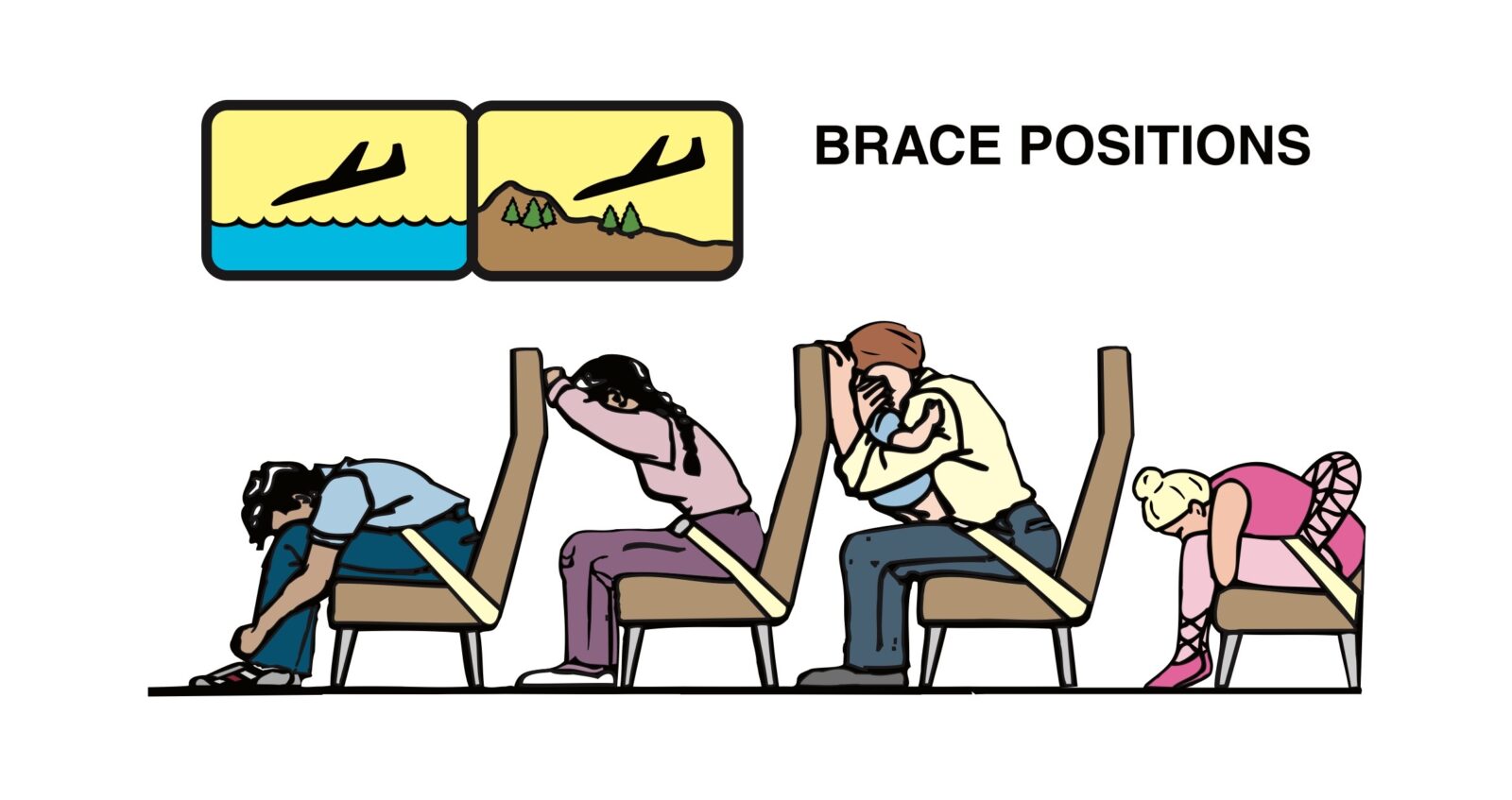
We had a chance to chat about airline passenger safety briefing cards with Trisha Ferguson, CEO of The Interaction Group, for a story on The Runway Girl Network.
The Olympia, Washington-based firm has been around for more than 50 years and has designed and printed inflight safety information cards for more than 600 airlines.
The important and information-rich seatback safety cards have been around for decades but only became mandated in the US aviation industry in 1977. And while it may seem like all the cards are the same, they vary from carrier to carrier, aircraft to aircraft, and have evolved in graphics and design.

“Many of the earliest versions were booklet-style pamphlets that were all or 90% text,” says Ferguson. “The content was unfamiliar to the average passenger. And many of the phrases, words, and terminology were only understood if you were an industry professional.”
Over the years, much has changed in the look of the illustrations in terms of style and culture. And some creative ways airlines tried to get passengers to pay more attention to the cards.
“One of my favorites was Sun Country Airlines,” says Ferguson. “We hid seven different characters in the illustrations, including a construction worker, a gentleman in a tuxedo, and a ballerina. And the crew would tell passengers that if they found all the characters, they’d get a little prize.”

Read more about the history and development of airline safety cards in our story on The Runway Girl Network.
Thanks for visiting Stuck at the Airport. Subscribe to get daily travel tidbits. And follow me on Twitter at @hbaskas and Instagram.